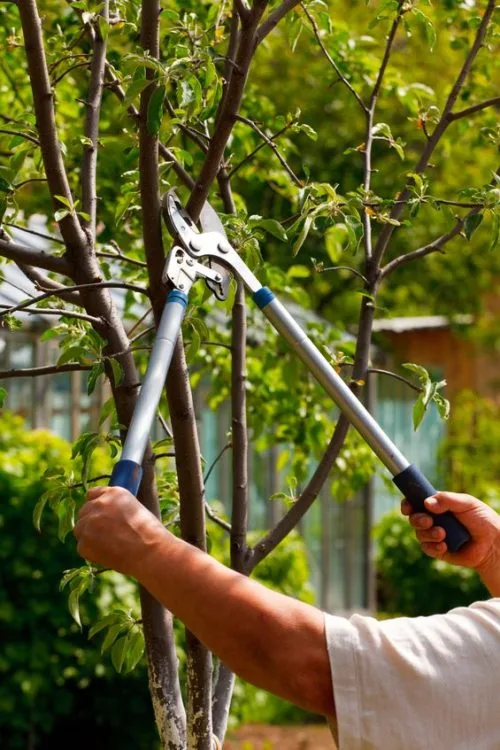
Most trees go dormant for the fall and winter, meaning their growth has come to a stop and they are prepared for the colder weather, this can be the best time to make adjustments to the tree for things like trimming or pruning.
You want to make sure you do this before the warm weather sets back in and the tree starts to grow again, also meaning the plant is clear of foliage so it’s easier to work with. Pruning during this period of time gives trees a chance to put energy towards new growth and creates a stronger connection for nutrients and food.
- You want to trim on a dry mild day, this means the prevention of waterborne plant diseases as well as damage from cold temperatures, as well as making it more pleasant for the gardener to work in.
- Never prune during freezing conditions, this means the incisions can dry out and cause damage instead of a good connection or bond.
- When you start to trim, clear out any dead branches or twigs, especially the parts that have been damaged by the cold or snow and ice.
- Make sure to thin out any overgrown areas, this will increase light and air to the crown of the tree as well as stop the tree looking so messy.
- When cutting a tree, you want to make sure the incision is at the node of the branch, this is where one branch attaches to another.
Not all trees are the same for trimming times, here are some examples of trees that have certain times of the fall that are best to prune:
RELATED TIP: Lawn & Garden Watering Guidelines
Conifers – best time to trim is in the fall season, temperatures are lower but not damaging, the tree is fully dormant at this point so it’s the best time to trim and prune.
Non-blooming trees – Late winter is the best time to trim these trees, Ginkgo trees or Cycad plants are a few examples best to prune in late winter.
Spring blooming trees – As soon as these start to bloom it’s a great time to trim and prune, a rising temperature as well as fresh leaves growing, Eastern Redwood or Flowering Dogwood are two examples of trees you want to prune as spring starts.
During the winter, trees are dormant, meaning they don’t grow leaves or change rapidly with the weather, this means you can trim or prune the tree without risks like sun damage or drying out fresh cuts to branches and twigs.
Having the timing right to trim and prune your trees is important, giving you healthy productive trees that are strong and ready for spring. Following the steps above should help you with achieving this.
Planting Trees
When it comes to planting trees in the winter, it really depends on the tree you want to plant, you need to keep an eye on the weather, you want to plant a new tree with clear weather ahead at the start of fall when it’s not too cold and there is no heavy rain or snow forecast, this gives the tree the best chance to grow without the risk of drowning or freezing the fresh roots.
RELATED TIP: What to Trim in February
You need to maintain watering and clearing any debris from the freshly planted trees, this will help stop any issues with light blockage or fungi growing. As well as help the tree get all the sunlight it needs and nutrients.
Even though it’s fall, you may still need to water the freshly planted trees, this is something you need to keep an eye on, depending on how much rain or snow occurs during the fall.



Comments (0)
Thanks for your comment!
Thanks for your feedback! Your comments have been successfully submitted! Please note, all comments require admin approval prior to display.
Error submitting comment!
There is a problem with your comment, please see below and try again.